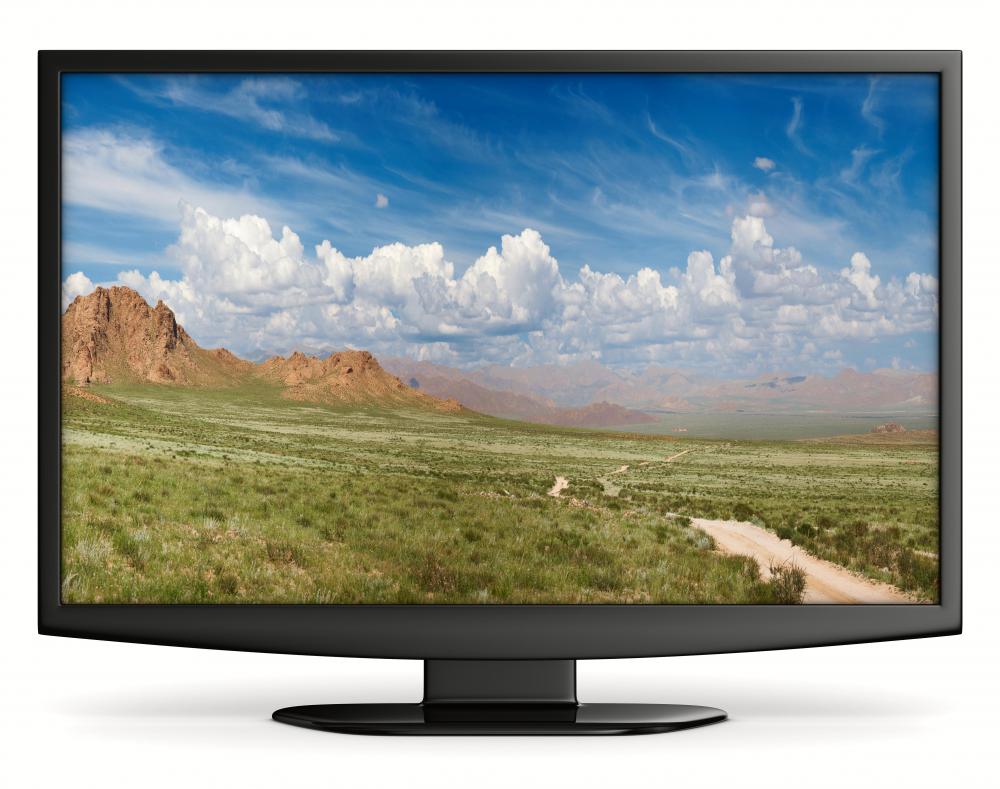At WiseGEEK, we're committed to delivering accurate, trustworthy information. Our expert-authored content is rigorously fact-checked and sourced from credible authorities. Discover how we uphold the highest standards in providing you with reliable knowledge.
What is Ultra HDTV?
In the world of super video television, there’s high-definition television (HDTV) and then there’s ultra HDTV, sometimes referred to as Ultra High Definition Video (UHDV) or Super Hi-Vision (SHV). Ultra HDTV has a higher resolution than HDTV, and they are both better than traditional television, in terms of resolution. Still experimental, ultra HDTV has a resolution of 4320p. HDTV is advanced video technology that drives what amounts to a much sharper, clearer, and ultimately more colorful picture than in most traditional TV displays, or standard definition TVs (SDTVs).
By and large, HDTV offers a picture of a higher resolution than traditional displays. With resolution, the larger the number, the better the picture on the screen. That is the more lines, or the more pixels, the sharper and better the picture. Traditional TVs offer resolutions of up to 480 lines.

HDTV can display resolutions of 720, 768, or 1080 lines (or up to 1,920 x 1,080 pixels). These are significant upgrades to previous technology. In order to take advantage of this increase in visibility, a bigger screen necessary. This is one main reason that the size of TVs has grown in recent years.
Ultra HDTV takes an even greater leap forward in video resolution technology. It offers an image resolution of 4,320 lines (or 7,680 × 4,320 pixels). Moreover, this is a progressive resolution; the image is displayed line by line, in a sequence. This type of resolution provides for a smoother and crisper viewing experience. While the 4320p can provide for a better image, it requires a lot of bandwidth to broadcast that much data.

This technology is still experimental, pioneered by the Japan Broadcasting Corporation (NHK). As of 2011, only a very small number of cameras were capable of capturing video with such high resolution, and they can only film for a limited amount of time, largely due to data storage issues. The format also requires an amount of processing power that is not yet available in the current technology. New compression systems will be required to transmit the signals, and even new materials for electrodes are needed to power the displays.
There are also some concerns about the safety of ultra HDTV signals. This format displays at 60 frames per second (fps), rather than the 24 fps of HDTV. The high speed of the display may cause nausea or confusion in viewers.
Despite the potential drawbacks, a number of broadcasters have expressed an interest in this technology, including the BBC and Italy's RAI. The first successful transmission was made from England to Japan in September 2010. It should be noted, however, that no television is currently available that can display the full 4320p signal.
AS FEATURED ON:
AS FEATURED ON:












Discussion Comments
While the 1080p signals take comparatively more bandwidth than a typical 1080i broadcast HD signal, the reality is that any 1080p TV is going to convert the 1080i signal to 1080p signal anyway and the conversion, unlike lower quality digital channel up-conversions, is mathematically straight forward. A 1080p TV with a superior in-built scaler will minimize the visible difference between the two *original* 1080i/1080p signals. Most blue Ray players allow you to output 1080p or 1080i so you can do this simple test yourself. The point is the difference is visibly minimal for most viewers. Bigger differences can be made with superior quality cables (less "noise" & more vibrancy) and the deployment of multi-type noise filtering power bars/boxes.
Post your comments